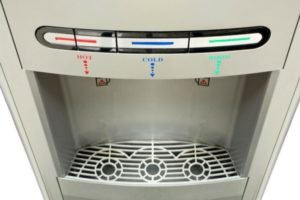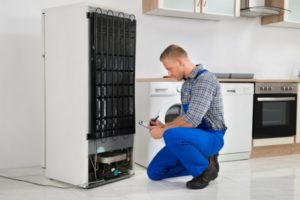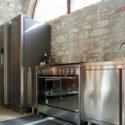How to Connect and Install a New Refrigerator
So you're ready to install a new refrigerator for your Apple Valley, MN home. Congratulations. Many newer fridges now come with standard features that were once considered luxuries, including devices such as water dispensers and ice makers. These, in particular, require a plumbing connection to function.
But don't worry; you don't need a degree in kitchen plumbing to set them up. Installing a new fridge requires a small amount of labor, but it's nothing most homeowners can't take care of themselves. Here's a guide on how to connect your new refrigerator.
Installing the Water Dispenser
 Off the bat, you need to find the nearest cold-water supply. Kitchens normally have these under the sink.
Off the bat, you need to find the nearest cold-water supply. Kitchens normally have these under the sink.
If you're lucky, there may be a supply ready to go in the area behind where the fridge is being installed, in which case all you have to do is connect it to the appliance directly.
After finding the water supply, follow these steps.
Step 1: Map Out Where the Piping Goes
It's best to get an idea of where the piping will run before getting started. This entirely depends on your kitchen's layout. You may be able to install piping through the cabinets, or you might have to run it underneath the floor from the supply to the fridge. Take precise measurements and make sure you have enough piping to complete the job. If there are any corners, you need to make sure the piping goes around them comfortably.
Step 2: Shut Off the Water
Turn off the water at the supply valve. Run a faucet until all of the water cycles through. This will prevent leaking while you make the connections.
Step 3: Attach an Adapter to the Water Supply
There are three types of adapters you can use to connect your fridge with the water supply: a soldered tee-fitting, a compression tee-fitting, and a saddle valve. If you buy a DIY kit, it probably comes with a saddle valve. We insist you don't use them. Saddle valves aren't designed to last long and are often subpar quality.
In many states, licensed plumbers are forbidden from installing them. Instead, we recommend using a tee-fitting. Soldered tee-fittings, which are made by hand, are stronger than pre-made compression tee-fittings, but either one will serve its purpose.
Disconnect the kitchen sink faucet from the water supply, connect the tee-fitting to the supply and then connect the faucet to the tee-fitting. This allows both the fridge and faucet access to the water.
Step 4: Connect Piping to Tee-Fitting and Refrigerator
It's time to link the water supply with the refrigerator itself. Attach the piping to the final connection on the tee-fitting and run it along toward the back of the fridge. Make the final connection with the appliance. Turn the water back on and check for any leaks at the tee-fitting and along the piping. If everything seems okay, run a few gallons of water and make a bunch of ice to determine if the water line is working properly.
 Installing the Ice Maker
Installing the Ice Maker
Modern fridges with built-in water dispensers and ice makers actually only need a single water line.
If you followed the instructions above, you have access to both devices.
Advantages of Expert Installation
 If you're confused about kitchen plumbing, don't worry; you wouldn't be the first person. Asking for professional help when installing a new appliance such as a fridge can actually be beneficial.
If you're confused about kitchen plumbing, don't worry; you wouldn't be the first person. Asking for professional help when installing a new appliance such as a fridge can actually be beneficial.
It ensures the job is completed right the first time and gives you peace of mind that everything will go smoothly. Enjoy everything your new fridge has to offer more quickly.

